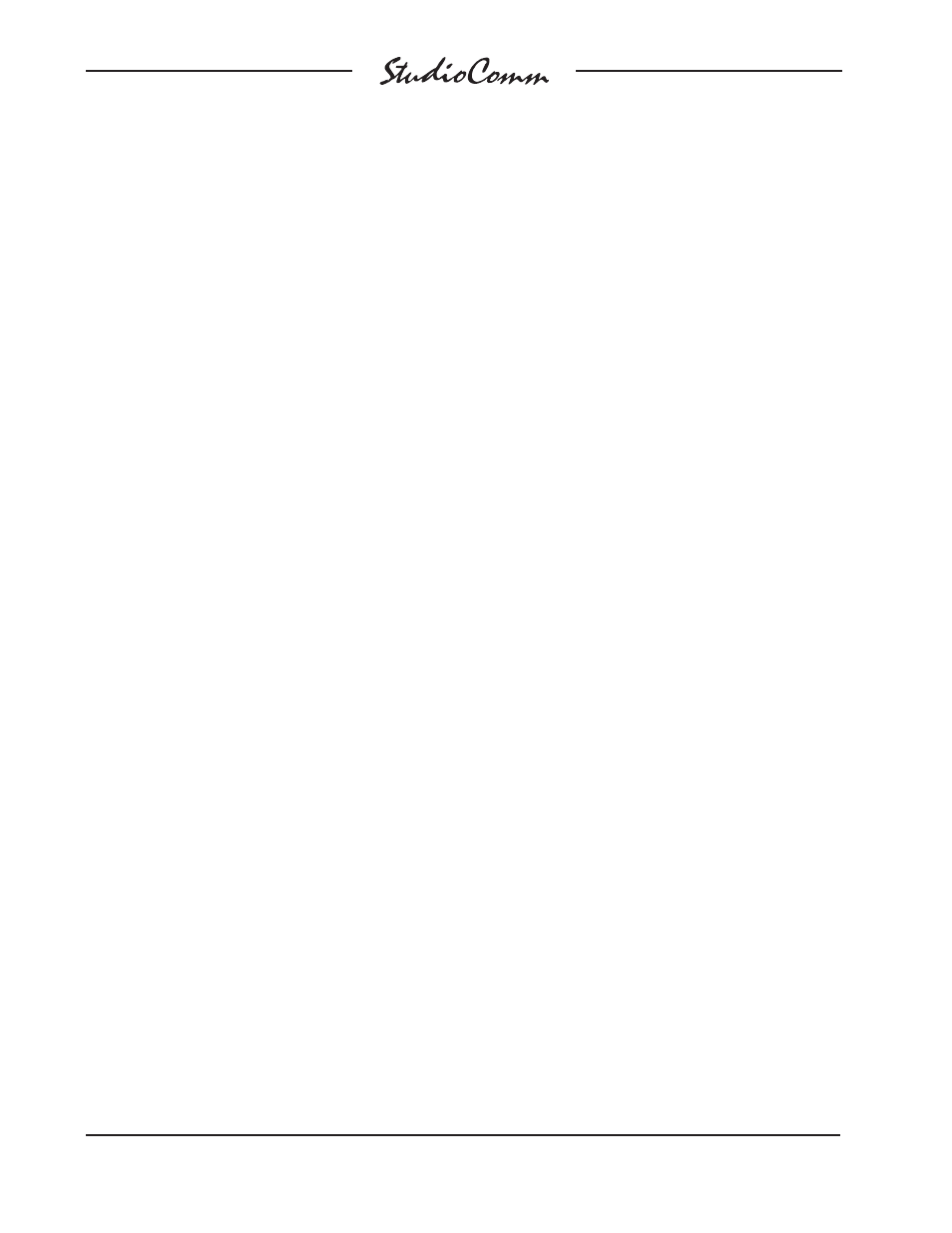Error code err3, Sample rate conversion (src) – Studio Technologies 760-03 V.4.15 User Manual
Page 48

Issue 3, April 2015
Model 760-03/77 User Guide
Page 48
Studio Technologies, Inc.
for Surround
code continues to be displayed the Model
760-03 must be returned to the factory for
service. Note that for the vast majority of
StudioComm systems neither of these error
codes, especially Err2, will ever appear.
Error Code Err3
As previously discussed in this user guide,
the bass management function only sup-
ports input signals whose sample rate is
44.1, 48, 88.2, or 96 kHz. If during normal
operation this condition is not met, it’s pos-
sible that
Err3 will display and the mute all
function will be automatically enabled. This
will occur if the bass management func-
tion is configured to be enabled for either
or both the surround and stereo post-fader
monitor outputs and an input with a non-
compatible sample rate has been selected.
In this scenario, selecting a different input
with a sample rate of 44.1, 48, 88.2, or
96 kHz will return the system to normal
operation.
Sample Rate Conversion
(SRC)
Circuitry associated with stereo input C
can provide sample rate conversion (SRC)
capability. A digital audio signal connected
to that input can have its sample rate and
timing re-synchronized to match the Model
760-03’s internal timing. While it would
be nice to proclaim that the engineers at
Studio Technologies came up with a unique
and exotic circuit to perform this function it’s
really not the case. Several semiconductor
companies provide “single-chip” SRC solu-
tions and an excellent one from AKM was
selected for the Model 760-03. The techni-
cal capabilities of the Model 760-03’s SRC
function is stated in this way: the sample
rate of an input signal can range from 1/6
to six times the Model 760-03’s output
sample rate, with the additional restriction
that it must be no less than 8 kHz and no
more than 216 kHz. The Model 760-03’s
output sample rate is determined by the
selected timing reference (sync) signal and,
if required, a configured value. If a word
clock, DARS (AES11), or AES3 signal is
the designated sync source its rate will be
the Model 760-03’s output sample rate. If a
video sync signal is connected, the Model
760-03’s sample rate is selected as part of
the configuration process.
So in practice what can the SRC function
accomplish? If the output sample rate is
48 kHz then a signal connected to stereo
input C can have a sample rate from 8 to
216 kHz. Or, as another example, if the
Model 760-03’s output sample rate is
96 kHz a signal connected to stereo input C
can have its sample rate range from 16 to
216 kHz.
As useful as allowing one disparate sample
rate to be converted to another, it may be
the ability of the Model 760-03’s SRC func-
tion to re-synchronize a signal that proves
most valuable. For example, in typical post-
production and broadcast applications all
signals will have a sample rate of 48 kHz.
A Model 760-03 and all of its normally con-
nected input signals will be “locked” to the
main timing reference signal that supports
the 48 kHz sampling rate. But, as an exam-
ple, a signal associated with a portable de-
vice, while at a 48 kHz sampling rate, may
not be synchronized (“genlocked”) to the
“house” reference. Connecting this signal
to stereo input C will cause the SRC func-
tion to “lock” it to the Model 760-03’s rate,
thus allowing it to be monitored over
a loudspeaker system. In addition, the ste-
reo input C direct monitor output can
be connected to other devices that find
need for the now-synchronized signal. In
